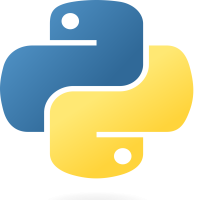
Python - Booleans
14-Jan-2024Discover the basics of Booleans in Python. Learn about logical values, boolean operations, and how to use boolean data to make decisions in your Python programs.
Booleans in Python: Unveiling Truths
In Python, Booleans are a fundamental data type representing truth values, either True or False. Booleans play a crucial role in control flow, decision-making, and logical operations within your programs. Let's explore the key aspects of Booleans in Python :
1. Literal Values :
- Booleans have two literal values: True and False.
# Example
a = Trueb = False
2. Comparison Operators :
- Booleans often result from comparisons using operators like ==, !=, <, >, <=, and >=.
# Example
result = 5 > 3 # This evaluates to True
3. Logical Operators :
- Logical operators such as and, or, and not manipulate Booleans in compound expressions.
# Example
expression = (x > 0) and (y < 10 ) # True if both conditions are true
4. Truthy and Falsy Values :
- Certain values are treated as True or False in Boolean contexts. For example, 0 and an empty string ('') are considered False.
# Example
value = 0is_true = bool(value) # This evaluates to False
5. Boolean Functions :
- Built-in functions like bool() can explicitly convert values to Booleans.
# Example
result = bool(42) # This evaluates to True
Understanding Booleans empowers you to create conditional statements, control the flow of your program, and make informed decisions based on truth values. Booleans serve as the backbone of logical operations, making your Python code more expressive and adaptable.


